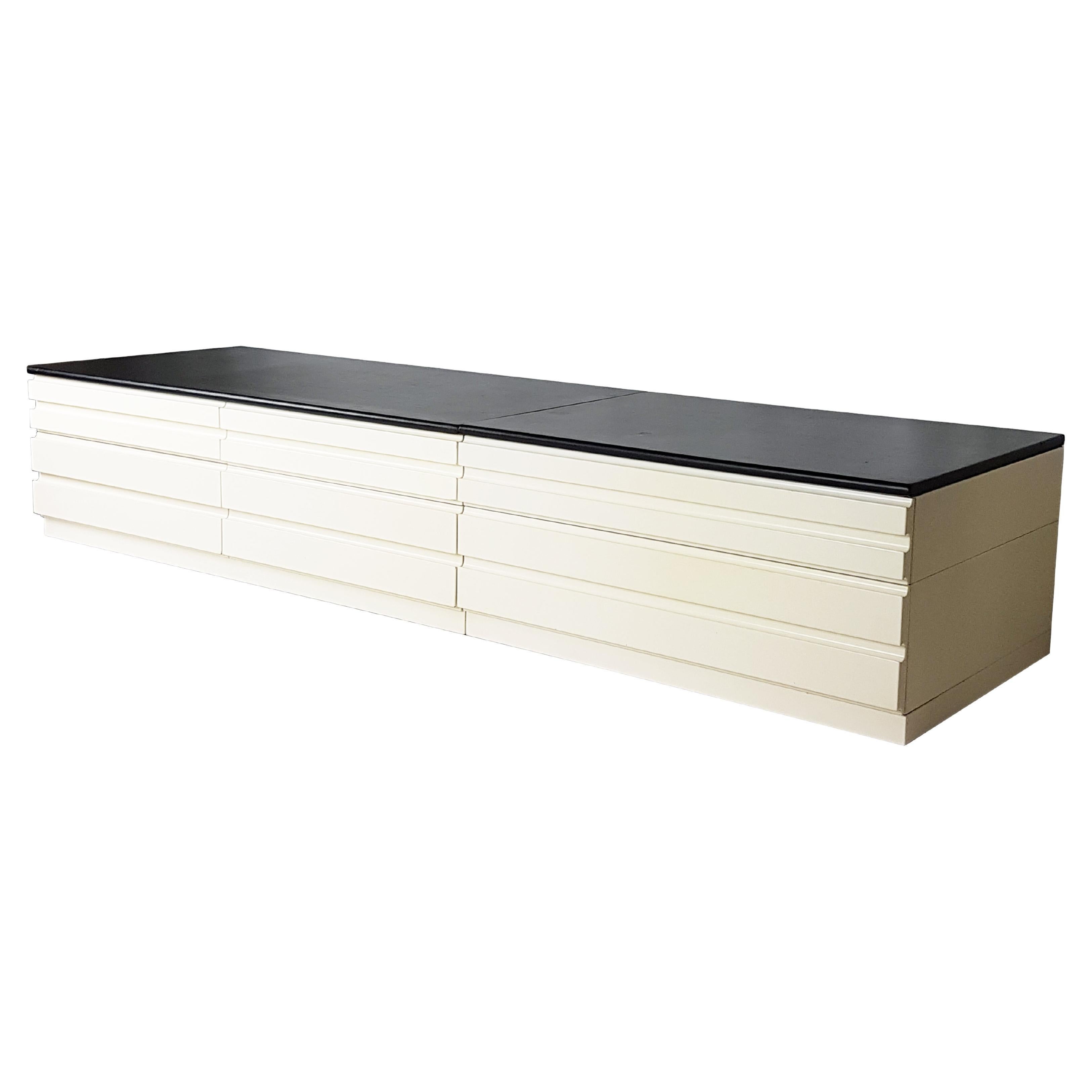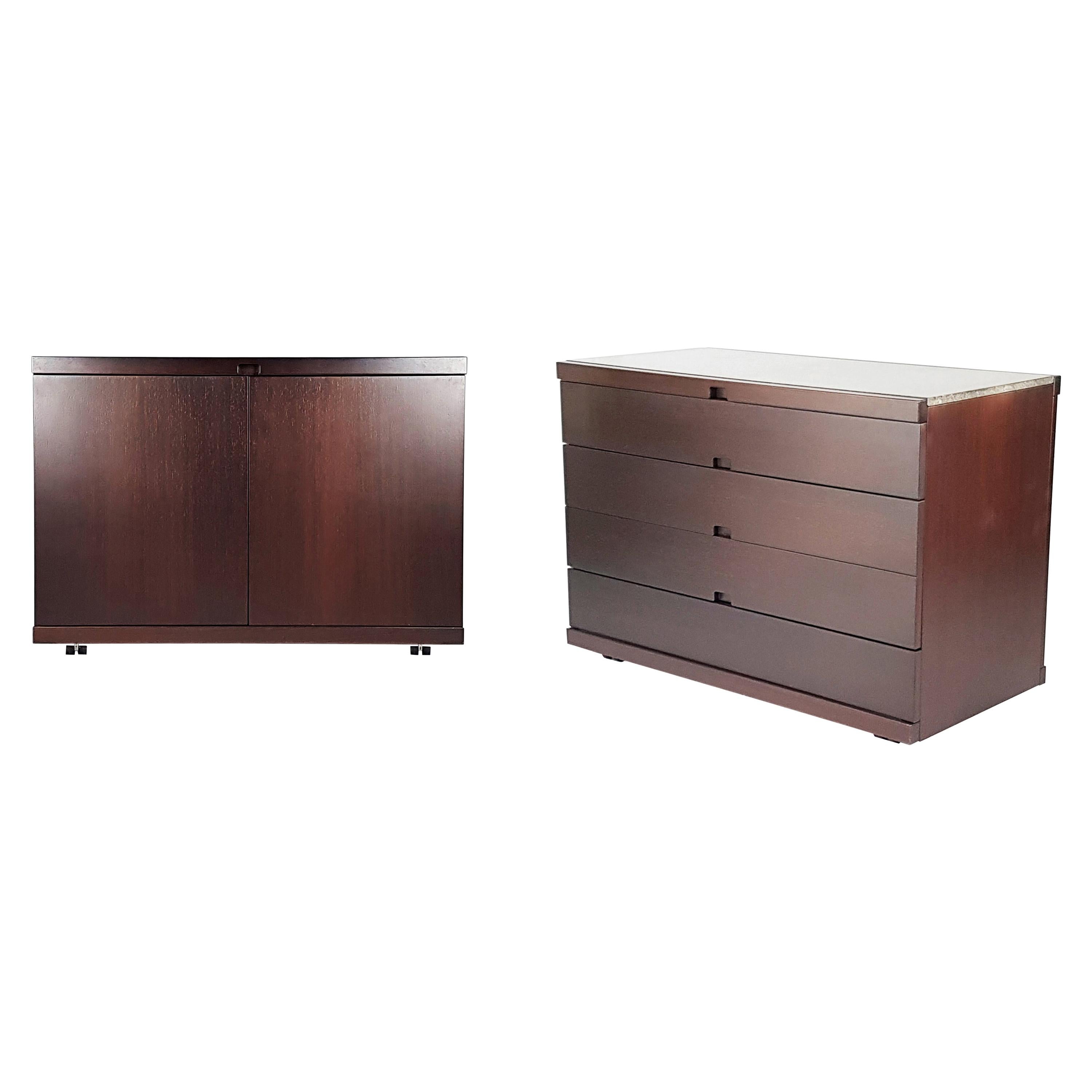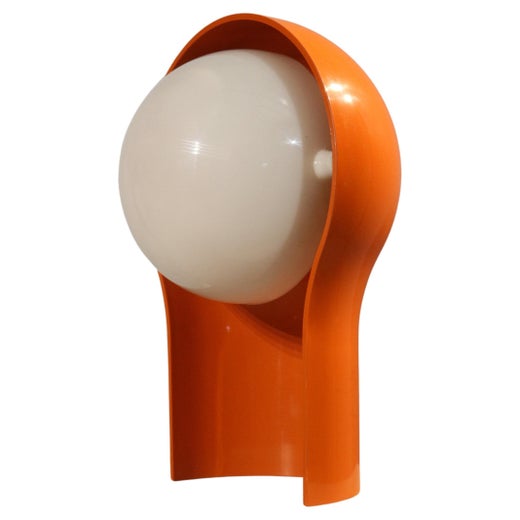Vico Magistretti Black CS49 Samarcanda Black Chest of Drawers by Poggi 1970s
About the Item
- Creator:Poggi (Manufacturer),Vico Magistretti (Designer)
- Dimensions:Height: 29.14 in (74 cm)Width: 86.62 in (220 cm)Depth: 21.26 in (54 cm)
- Style:Post-Modern (Of the Period)
- Materials and Techniques:
- Place of Origin:
- Period:
- Date of Manufacture:1970s
- Condition:Wear consistent with age and use.
- Seller Location:Montecatini Terme, IT
- Reference Number:1stDibs: LU5304231148972
Vico Magistretti
As one of the founding fathers of modern Italian design, prolific architect and industrial designer Ludovico Magistretti (known by his nickname Vico) was guided by his philosophy, “There is no excuse for bad design.” His architectural projects are widely revered, and an ingenious meld of form and function can be found in his stylish and deceptively simple table lamps, sofas, armchairs and other mid-century furnishings.
Born in Milan, Magistretti followed in the footsteps of his father and grandfather (both architects) to study architecture at the Polytechnic University of Milan. At the outbreak of World War II, he fled to Switzerland, and it was there he met his role model and mentor, renowned humanist architect Ernesto Nathan Rogers. Magistretti was inspired by Rogers’s vision to revive postwar Italy, and they collaborated on several reconstruction projects. Among Magistretti’s first architectural designs is a “poetic” round church, which he created for the QT8, an experimental Milanese neighborhood.
When Magistretti returned to Milan in 1945, he worked at his father’s architectural firm. It wasn’t until the early 1950s that he expanded his talents into design while working with furniture artisans.
In the 1960s, Magistretti began his 30-year working relationship with famed entrepreneur Cesare Cassina of the Cassina furniture manufacturing company. In their design approach, the two men shared a vision of the relationship between modernity and tradition and enjoyed a close bond (Magistretti designed Cassina’s luxurious villa in 1965). However, their friendship was not without contention.
Legend has it that upon seeing the prototype for Magistretti’s Maralunga sofa, Cassina hated it so much that he punched it, breaking the back of the sofa, which crumpled into itself.
“Right, great, it looks perfect to me like that,” an unfazed Magistretti allegedly responded, and the Maralunga’s slumped, adjustable-height backrest was born. Incidentally, the Maralunga sofa won Italy’s Compasso d’Oro award as did his Eclisse lamp for Artemide and his Atollo lamp for Oluce.
Magistretti died in 2006, but his designs live on in galleries, museums and private residences and offices around the world.
Find a range of vintage Vico Magistretti furniture and lighting on 1stDibs.
- ShippingRetrieving quote...Ships From: Florence, Italy
- Return PolicyA return for this item may be initiated within 7 days of delivery.
- Vico Magistretti Tema Square Table in Black Lacquered Wood by B&B 1970sBy B&B Italia, Vico MagistrettiLocated in Montecatini Terme, ITSquare table model Tema with structure in black lacquered wood and diagonal inserts in natural spruce on top. Designed by Vico Magistretti and produced by B&B, 1973, Italy. Lict...Category
Vintage 1970s Italian Mid-Century Modern Dining Room Tables
MaterialsWood, Spruce
- Vico Magistretti Set of Twelve Black Carimate Chairs by Cassina 1960sBy Cassina, Vico MagistrettiLocated in Montecatini Terme, ITSet of twelve Carimate chairs with structure in black lacquered beech wood and woven straw seat, designed by Vico Magistretti and produced by Cassina in the 1960s. The Carimate cha...Category
Vintage 1960s Italian Mid-Century Modern Chairs
MaterialsStraw, Beech
- Vico Magistretti Set of Six Black Carimate Chairs by Cassina 1960sBy Cassina, Vico MagistrettiLocated in Montecatini Terme, ITSet of six Carimate chairs with structure in black lacquered beech wood and woven straw seat, designed by Vico Magistretti and produced by Cassina in the 1960s. The Carimate chair ...Category
Vintage 1960s Italian Mid-Century Modern Chairs
MaterialsStraw, Beech
- Franco Albini Cicognino Coffee Table in Teak Wood by Poggi Pavia 1970s ItalyBy Franco Albini, PoggiLocated in Montecatini Terme, ITCicognino coffee table entirely made in teak wood designed by Franco Albini in 1952 and firstly produced by the Italian company, Poggi Pavia from the 1950s. The Cicognino coffee t...Category
Vintage 1970s Italian Mid-Century Modern Coffee and Cocktail Tables
MaterialsTeak
- Franco Albini PL19 or Tre Pezzi Armchair in Red Fabric by Poggi 1970sBy Poggi, Franco Albini and Franca HelgLocated in Montecatini Terme, ITPL19 or Tre Pezzi armchair with frame in black lacquered tubular steel, seat and back in padded red fabric. Designed by Franco Albini and Franca Helg in 1959 for the Nuove terme Lui...Category
Vintage 1970s Italian Mid-Century Modern Armchairs
MaterialsSteel
- Galleria Mobili d'Arte Cantù Sideboard in Wood with Doors and Drawers 1950sLocated in Montecatini Terme, ITWooden sideboard with three storage units (two larger and one small) and three frontal drawers with a structure entirely realized in wood and brass details (keys and feet). Manufac...Category
Vintage 1950s Italian Mid-Century Modern Cabinets
MaterialsBrass
- White Wood and Black Skai Samarcanda Chest of Drawers by Magistretti for PoggiBy Vico Magistretti, PoggiLocated in Varese, LombardiaWooden structure painted in white polyurethane color. Black skai cover on the top (light defects at some corner). Large chest of drawers: cm 34,5h x 107w x 53,5d Small chest of dra...Category
Vintage 1970s Italian Space Age Commodes and Chests of Drawers
MaterialsFaux Leather, Wood
- Pair of Wooden and Marble Storage Unit by V. Magistretti for Poggi, Italy, 1970sBy Poggi, Vico MagistrettiLocated in Varese, LombardiaThis set is composed by one chest of drawers and one cabinet. They were designed by Vico Magistretti and produced by Poggi, circa 1970. They can be used as a separate units or as a u...Category
Vintage 1970s Italian Modern Cupboards
MaterialsMarble, Metal
- 1950s Vintage Walnut Chest of DrawersLocated in London, GBA very stylish and useful vintage walnut chest of drawers. This was made in England, it dates from around the 1950-60’s. This is of great quality...Category
Vintage 1950s British Mid-Century Modern Commodes and Chests of Drawers
MaterialsWalnut
- Antique Georgian Period Chest of DrawersLocated in London, GBA fantastic George III period chest of drawers. This was made in England, it dates from around the 1790-1810 period. It is of outstanding quality, it is very heavy and well built. I...Category
Antique 1790s British George III Commodes and Chests of Drawers
MaterialsBrass
- Antique Walnut Serpentine Chest of DrawersLocated in London, GBA very well made and useful antique walnut chest of drawers the Georgian style. This was made in England, it dates from around the 1930’s. It is of lovely quality and is a great s...Category
Vintage 1930s British Georgian Commodes and Chests of Drawers
MaterialsWalnut
- French Art Deco Chest of DrawersLocated in Paddock Wood Tonbridge, GBA stunning quality chest of drawers produced in France in the 1940’s in the Manner of Jules Leleu this chest of drawers has four long drawers with brass handles, stands on a quality ...Category
Vintage 1940s French Art Deco Commodes and Chests of Drawers
MaterialsMahogany






